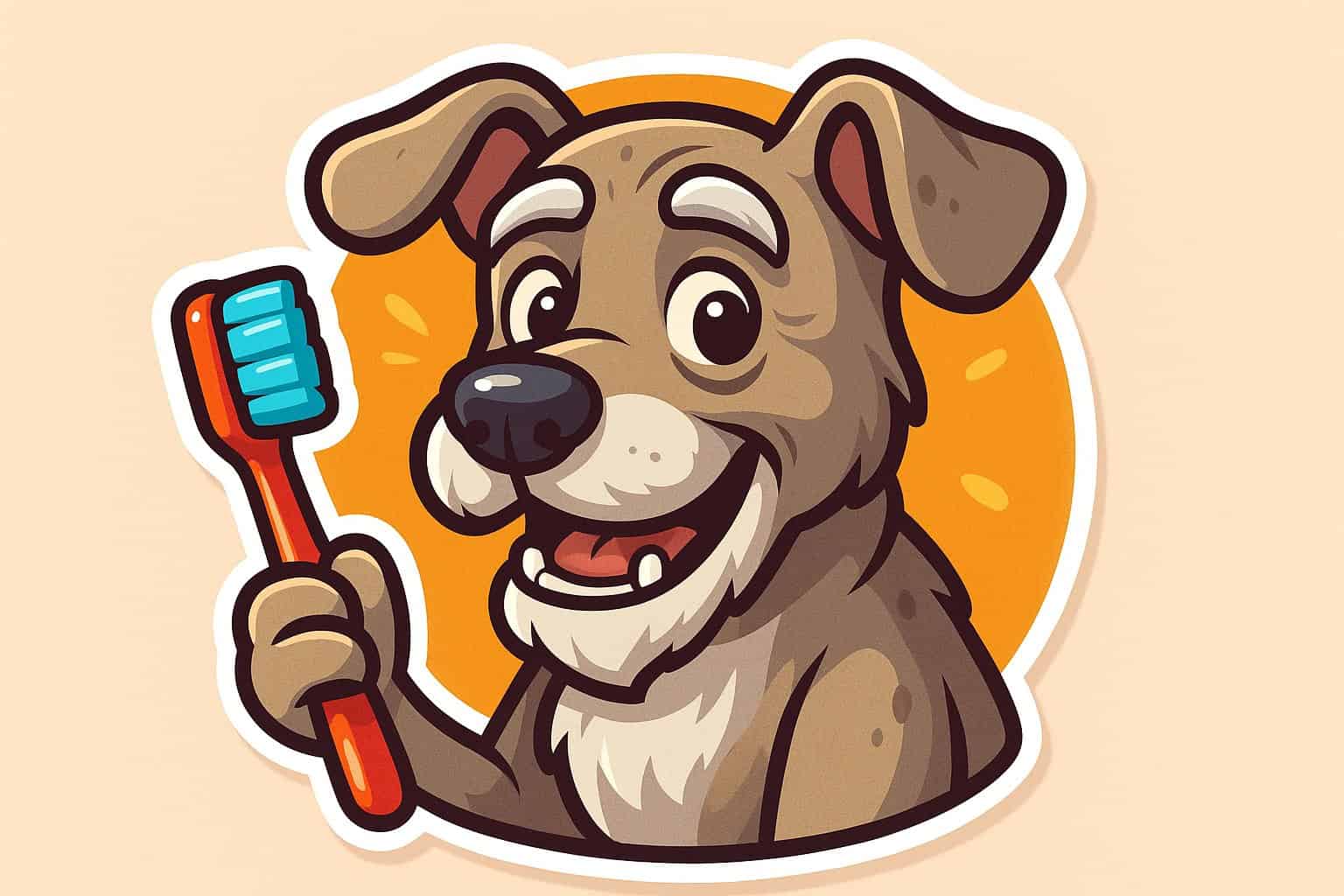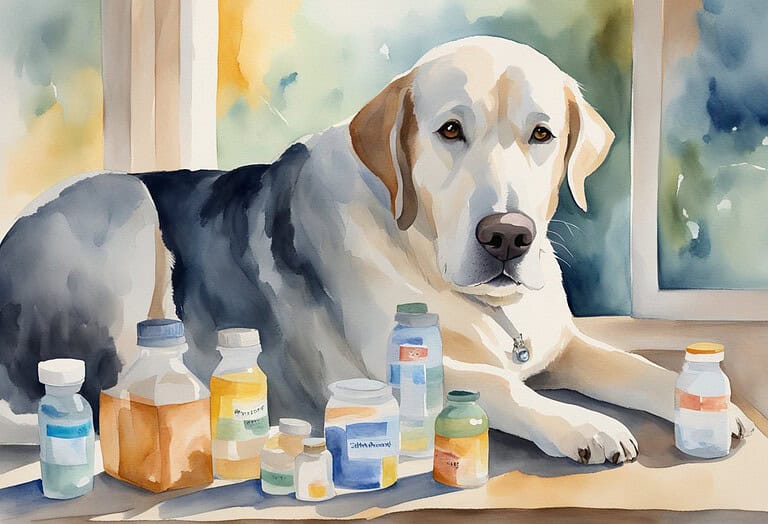10 Tips To Make Your Senior Dog Accept Dental Care

Getting your senior dog on board with dental care can feel like an uphill climb. One day, your easygoing pup suddenly wriggles away the second they see a toothbrush.
As dogs age, their teeth get more sensitive. Their patience for new routines tends to shrink, so dental care becomes even more important and a bit trickier.
Whether your senior dog has never had their teeth brushed or they’ve grown anxious about dental care, gentle methods can help. Building trust and sticking with it can make the whole process less stressful for both of you.
A few small changes like positive associations with dental tools or picking the right products can really boost your dog’s comfort with oral care.
1) Schedule Regular Vet Dental Check-Ups at Least Once a Year
Your senior dog’s mouth might look fine, but dental problems often lurk beneath the surface. Just like us, older dogs need regular dental check-ups.
Set up these appointments at least once a year. Your vet can catch early signs of gum disease or tooth decay that you might miss.
Senior dogs face more dental issues after years of chewing and wear. These check-ups matter even more as your dog ages.
During the visit, your vet examines your dog’s teeth and gums closely. They can also do professional cleanings to remove tartar that brushing can’t touch.
Catching problems early saves your dog pain down the line. It also helps prevent serious health issues that can affect their heart or kidneys.
If your dog hates dental care at home, mention it to your vet. They might spot the reason and offer advice tailored to your situation.
2) Brush Your Senior Dog’s Teeth Weekly
Weekly brushing is hands down the best way to keep your senior dog’s teeth clean. Your pup needs it just like you do.
Pick a soft toothbrush made for dogs and only use dog toothpaste. Human toothpaste isn’t safe for pups.
Let your dog sniff and taste the toothpaste first. Most dog toothpastes come in flavors like chicken or beef. Kind of weird, but dogs love it.
Lift your dog’s lip gently and brush in small circles. Focus on the gum line, since that’s where plaque builds up most.
Keep sessions short, maybe 30 seconds at first. Senior dogs often need time to get used to this.
If your dog pulls away, don’t stress. Take a break and try again later. Some dogs need weeks to warm up to tooth brushing.
Make it fun with treats and lots of praise. Your dog will start to see brushing as a good thing.
3) Use Dental Chews Like Greenies Senior Dental Treats
Have you noticed your senior dog refusing their usual dental chews? Sensitive teeth make harder treats uncomfortable.
Greenies Senior Dental Treats have a softer texture, perfect for older dogs. They gently clean teeth and massage gums without causing pain.
These chews scrape away plaque as your dog gnaws on them. The softer texture still gets the job done, just more gently.
Wondering if they actually help? Dental chews can reduce tartar buildup and freshen breath between cleanings.
Give these treats as part of your daily routine. Your dog gets a reward, and you get peace of mind about their dental health.
Pick the right size for your dog’s weight. Too small and they might gulp it down, too big and it’s tough to chew.
Always supervise your dog when they have a dental chew. That way, you know they’re safe and getting the full benefit.
4) Offer Soft, Dental-Friendly Diets Like Hill’s Prescription Diet t/d
Dental-friendly foods are different from regular kibble. They’re designed to clean teeth gently while your dog eats.
Hill’s Prescription Diet t/d is made for dental health. The kibble scrapes away plaque but is still soft enough for sensitive mouths.
Instead of wrestling your dog for tooth brushing, let their dinner help out. It feels like a win-win.
These diets also clean near the gum line, where problems usually start. Brushing still matters, but dental food gives you extra help.
Ask your vet if this food is right for your dog. Some seniors have special dietary needs.
The best part? Your dog has no idea they’re eating „medicine“, they just think it’s dinner.
5) Watch for Signs Like Bad Breath, Drooling, or Trouble Eating
Your senior dog’s mouth says a lot about their health. Bad breath isn’t just gross, it can be the first sign of dental trouble.
Does your dog’s breath suddenly smell worse? A strong, foul odor could mean tooth decay or gum disease.
Pay attention to how your dog eats. Are they chewing on one side, dropping food, or eating slower than usual?
Excessive drooling can point to dental pain. You might spot wet spots on their bed or see more saliva than normal.
Some dogs paw at their face or mouth when something hurts. Others stop playing with chew toys they used to love.
If you notice these signs, don’t wait. Dental issues can get worse fast and mess with your dog’s appetite or mood.
Jot down what you see. This info helps your vet figure out what’s going on and how to help.
6) Schedule Professional Cleanings with Non-Anesthetic Options
If your senior dog has health issues that make anesthesia risky, non-anesthetic cleanings could be a good option.
During these cleanings, your dog stays awake while a professional removes visible plaque and tartar. No anesthesia means less risk for dogs with heart or kidney problems.
Schedule these every 6 to 12 months for the best results. Small breeds and older dogs often benefit the most.
Non-anesthetic cleanings only clean above the gumline, though. They can’t reach deep down like full dental procedures.
If your dog gets anxious, ask about comfort measures during the visit. Some clinics really know how to keep nervous dogs calm.
7) Add Enzymatic Water Additives
Water additives make dental care easy. Just add them to your dog’s water bowl and let the enzymes do the work.
These additives break down bacteria in your dog’s mouth, fighting plaque and bad breath.
Pour the recommended amount into your dog’s water each day. Most dogs don’t notice any taste.
The enzymes get to work as soon as your dog drinks. Over time, you’ll probably notice fresher breath and less plaque.
This is a great option for dogs who hate having their teeth brushed. It’s gentle and effortless for both of you.
Pick a product made for dogs and follow the instructions on the bottle.
8) Use Rubber or Nylon Dental Toys
Turn dental care into playtime with rubber or nylon toys. They secretly clean your dog’s teeth while your pup just thinks they’re having fun.
KONG Dental Sticks work well for seniors. The textured bumps massage gums and clean teeth gently.
The rubber flexes as your dog chews, giving a deeper cleaning action. It’s like a toothbrush in disguise.
Stuff the toy with treats to make it even more tempting. Your dog focuses on the treat, and the toy cleans their mouth.
Choose toys that fit your dog’s chewing style. Senior dogs often need softer rubber or gentler textures.
Replace toys when they get worn out. Damaged toys can break and become a choking hazard.
9) Avoid Hard Bones or Antlers That Can Fracture Brittle Teeth
Your senior dog’s teeth aren’t as tough as they used to be. Years of chewing have taken their toll.
Hard bones, antlers, and tough toys can crack or break old teeth. That kind of injury is painful and can lead to bigger problems.
Would you bite down on a rock if you had a loose tooth? Probably not. Your dog’s teeth face the same risks.
Cracked teeth cause pain, and you might notice your dog chewing on one side or pawing at their mouth.
Instead, offer softer chews like bully sticks or tendon treats. They’re safer and still satisfy your dog’s urge to chew.
When in doubt, ask your vet what’s safe for your dog’s mouth.
10) Add Omega-3 Supplements to Reduce Gum Inflammation
Senior dog gums often get inflamed or irritated with age. Omega-3 fatty acids can help calm things down.
These natural anti-inflammatories work from the inside out, reducing swelling and redness in your dog’s mouth.
You can find dog-specific omega-3 supplements at most pet stores. Fish oil is a common choice, but pick a high-quality product.
Start with the recommended dosage for your dog’s weight. Mix it into their food, or give it directly if your dog doesn’t mind the taste.
Plenty of dogs like the fishy flavor, which makes this supplement easy to give. After a few weeks, you might spot healthier, less inflamed gums.
Senior Dog Dental Anxiety
Older dogs often resist dental care more than younger pups. Physical discomfort and past experiences can make them anxious about anything involving their mouth.
Senior pets show stress in ways you might not expect. It’s worth paying attention to subtle changes in their behavior.
Common Reasons Older Dogs Resist Dental Care
Physical discomfort is a big deal for senior dogs. Arthritis makes it tough to hold their head still during brushing.
Their joints get stiff and sore. Imagine trying to open your mouth wide when your jaw hurts, that’s what your dog feels.
Sensitive gums and teeth can turn even gentle touches into sharp pain. Older dogs often have inflamed gums that hurt with the slightest pressure.
Bad memories from vet visits can stick around for years. If your dog remembers a painful dental procedure, they’re not likely to forget it.
Losing some vision or hearing makes everything scarier. Your dog can’t see or hear what’s coming, so dental care feels unpredictable.
Cognitive changes can make old routines seem new and frightening. Some dogs suddenly fear things they used to tolerate.
Signs of Dental Stress in Seniors
Look for early warning signs before your dog gets too upset.
- Heavy panting or drooling
- Trembling or shaking
- Trying to hide or escape
- Whining or whimpering
- Stiff posture
Behavioral changes might show up hours before dental care starts. Your dog could refuse treats or avoid favorite spots.
Some dogs shut down completely and ignore your voice. Others might get snappy or growl if you go near their mouth.
Physical signs include rapid breathing, wide pupils, or extra shedding. Their heart might race, too.
Pay attention to subtle cues. Does your dog suddenly want to go outside? Are they pacing or restless? These can signal rising stress.
Building Trust Around Dental Care
Senior dogs need patience and time to accept new dental routines, especially if they’ve never had regular tooth care. You can help your older dog feel safer by creating positive experiences and moving slowly through each step.
Creating Positive Associations With Toothbrushing
Your senior dog might get nervous if you touch their mouth, especially if this feels new. Just start by touching their muzzle, then give them treats and lots of praise.
Keep these first sessions short – only a few seconds. When your dog seems calm with muzzle touches, try gently lifting their lip.
Right after you lift their lip, hand them a high-value treat. Timing really matters here, so make sure the treat comes right after, not during.
Next, let your dog sniff and lick some toothpaste from your finger. Dog toothpaste actually tastes good to them, and a lot of pups love the chicken or peanut butter flavors.
Show them the toothbrush, but don’t use it yet. Let your dog sniff it, then offer a treat. If you want, put a dab of toothpaste on the brush for them to lick.
Practice the brushing motion on your own hand while your dog watches. It might feel silly, but it helps your dog get used to the idea.
When you finally touch the brush to one tooth, keep it super quick and reward your dog right away.
Pacing New Routines for Geriatric Dogs
Older dogs just don’t adapt to change as quickly as puppies. Your 10-year-old pup needs way more patience than a youngster.
Plan to spend about 2-3 weeks just building trust before you even think about brushing all their teeth. Have you noticed your senior dog moving slower in the morning?
Pick times when they’re most alert and comfortable. Many older dogs perk up in the evening after dinner, so that might be your best shot.
Keep early sessions super short, under 30 seconds. Their attention span’s probably shorter now, and stiff joints don’t help.
If they look tired or uncomfortable, just call it for the day and try again tomorrow. Break each step into smaller pieces.
Instead of brushing all their teeth at once, start with just the front ones. Add a few more teeth each week as your dog gets used to it.
Some days just won’t go well. If your dog seems sore or had a rough day, stick to the muzzle-touching step and don’t push it.






